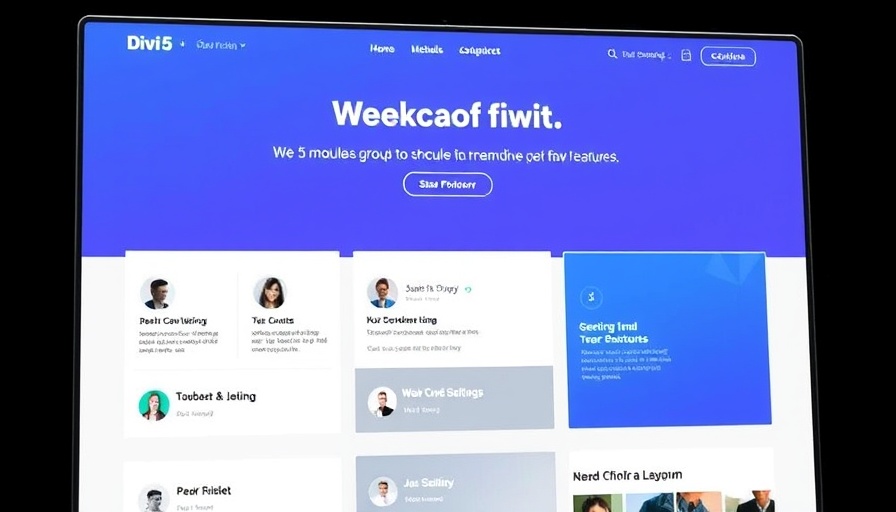
Unlocking the Power of Divi 5: Exploring Module Groups
Divi 5 has introduced a transformative feature known as Module Groups, offering WordPress users unprecedented control and efficiency in website design. This innovative capability allows designers to bundle multiple modules into a cohesive unit, significantly streamlining the design process. Let’s dive into what Module Groups are, their importance, and practical applications you can utilize.
What Are Module Groups and Why They Matter
Module Groups serve as a new container element within Divi that enables users to organize multiple modules into a single entity. By grouping elements like headings, text modules, and buttons, users can manage these components as one unit. This functionality enhances overall design organization and consistency, as adjustments can be applied across all grouped modules simultaneously. Imagine working on a project where you must maintain design uniformity—this ability to manage grouped elements effectively can save a significant amount of time and reduce the likelihood of errors.
Better Workflow with Module Groups
Utilizing Module Groups streamlines workflows significantly. For instance, if you have a series of testimonials you want to present on your site, grouping them together allows you to style and reposition them with ease. This individual and mass styling is crucial for maintaining a coherent design aesthetic across the board. As a performance expert, I see the value in tools that enhance efficiency without compromising site speed or user experience.
Practical Use Cases for Module Groups
One of the exciting aspects of Module Groups is their versatility. Here are several real-world applications:
- Future Use Case: Posts and Products - Organize your blog posts or product categories into groups, making it easier to update and maintain consistency.
- Call To Action Sections - Combine buttons, images, and text into dynamic call-to-action blocks, enhancing conversion rates.
- Testimonial Sections - Group testimonials for a uniform presentation that resonates better with users.
- Product Categories - Present product categories in an organized manner, making navigation simpler for users.
- Restaurant Menus - Consolidate menu items for a polished look that promotes readability and user engagement.
Design Smarter with Module Groups
The introduction of Module Groups coincides with upcoming features like Flexbox and the Query Loop Builder, which promise to further enhance design capabilities within Divi 5. This sets the stage for even more complex layouts and functionalities that can benefit from this new grouping feature. Designers can create intricate layouts without the common headache of tedious module management, allowing for heightened productivity.
Maximizing Your Use of Module Groups: Tips and Best Practices
To fully capitalize on the benefits of Module Groups, consider the following tips:
- Always group similar elements together for easier management.
- Regularly preview your grouped elements to ensure they align cohesively with the overall design.
- Stay updated on upcoming features that may complement Module Groups, enhancing their utility.
As you experiment with Module Groups in Divi 5, remember to focus on how grouping can streamline your workflow, foster design consistency, and enhance the user experience on your site. The addition of this feature marks a significant improvement in web design capabilities, positioning Divi 5 as a leader in the WordPress theme space.
Time to Embrace the Change
Now is the perfect time to integrate Module Groups into your Divi 5 projects. With their organizational advantages and the rollout of further features to support them, embracing this new functionality can lead to stunning and efficient designs. Participate in the ongoing evolution of your WordPress site by exploring these features, and be prepared to create layouts that not only look good but function seamlessly for your audience.
Discover the future of web design with Module Groups and elevate your projects to new heights. Ready to transform your design process? Start using Module Groups today!
 Add Row
Add Row  Add
Add 




 Add Row
Add Row  Add
Add 

Write A Comment